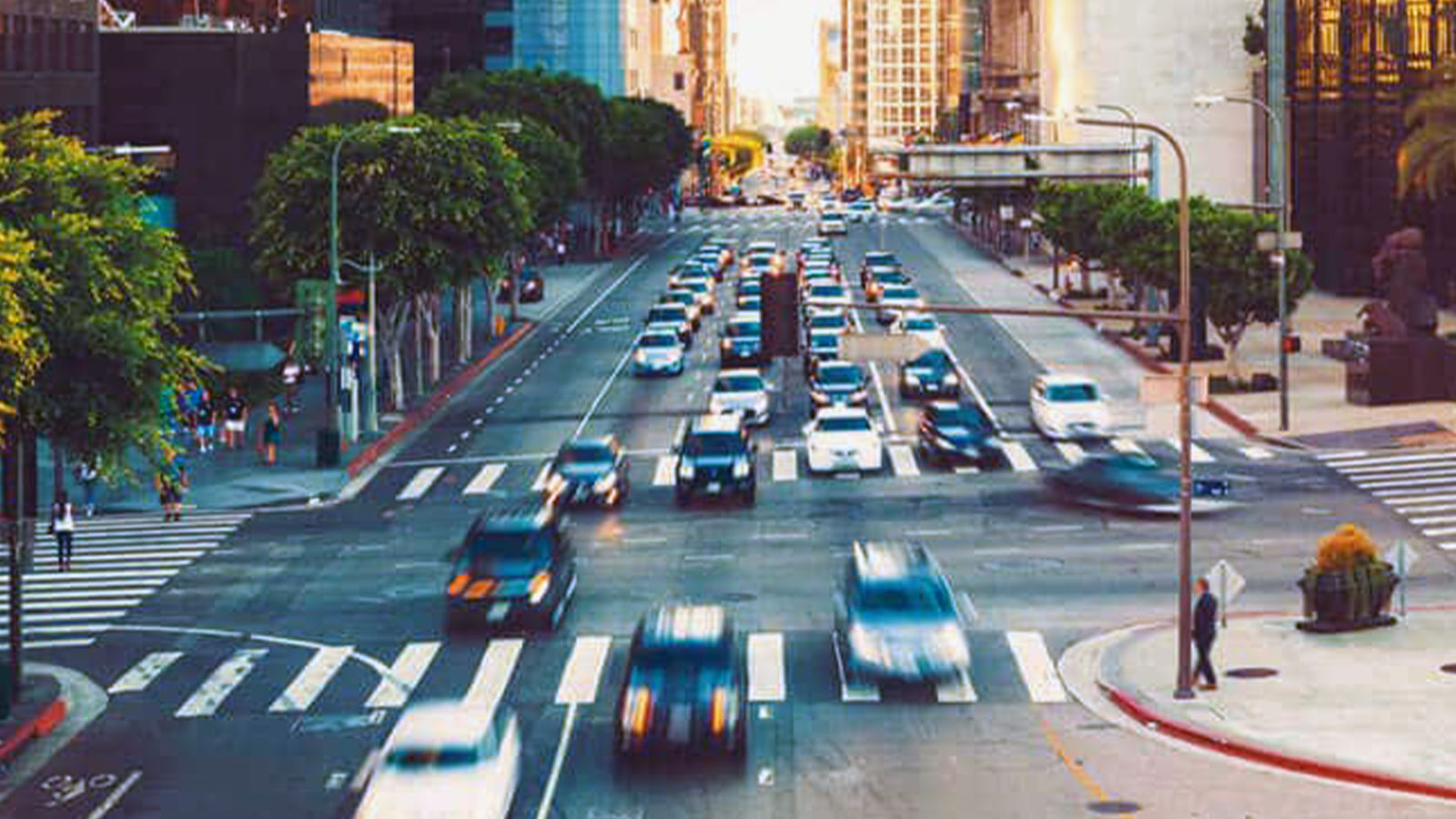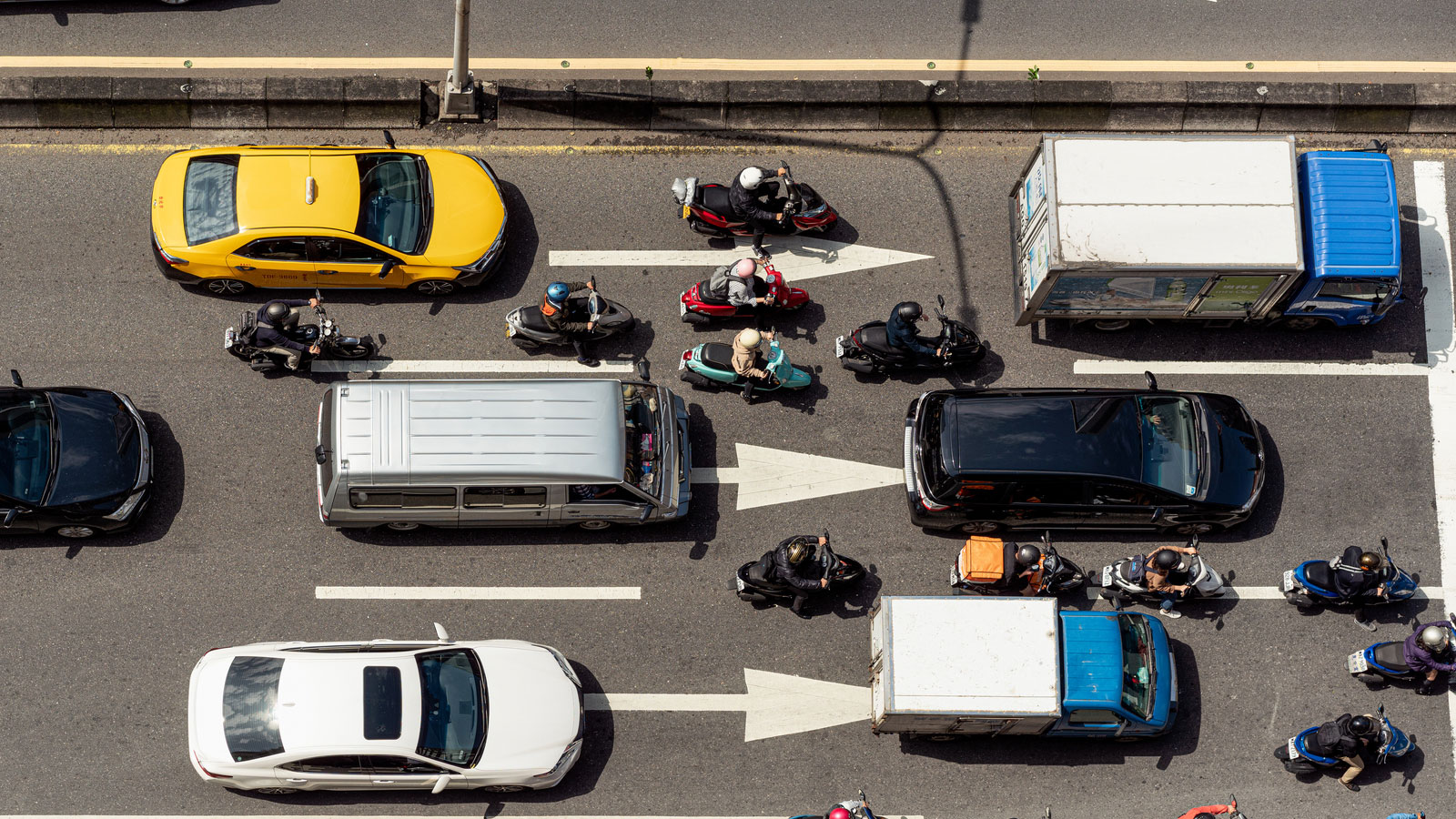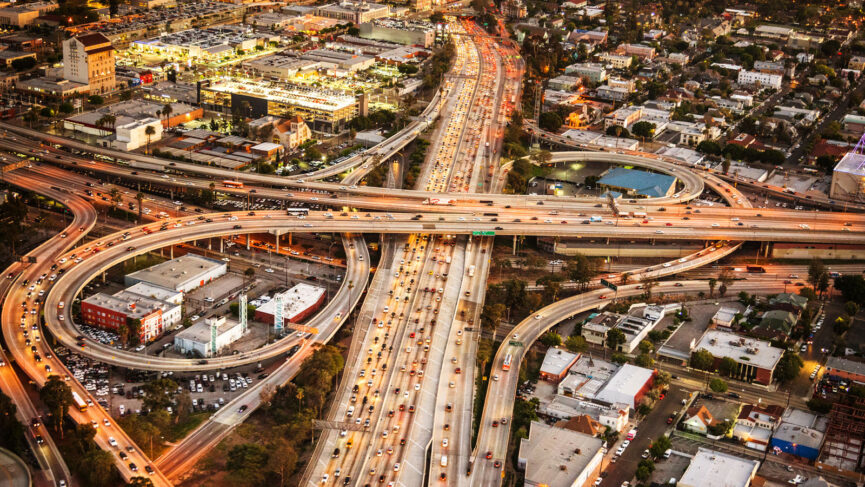When an Angeleno is asked which day is the worst for traffic, the immediate reply is often “every day.” Yet, new data reveals that while Los Angeles traffic can be unpredictable, there are distinct trends that separate the best from the worst commuting days. In our latest review of this comprehensive study, we’ll explore which days offer a smoother drive, why certain days are particularly challenging, and what the implications are for drivers—especially when accidents occur. For anyone navigating these congested highways, understanding these patterns isn’t just a matter of convenience; it’s a matter of safety and legal preparedness.
In this blog post, we’ll break down the study’s findings, including insights from the USC Crosstown team, who analyzed data across 18 freeway zones covering the 5, 10, 101, 110, and 405 freeways. Their research examined average speeds and travel times along 18 simulated commutes, offering a detailed look at the best and worst days for both morning and evening journeys. As a firm that specializes in auto accident cases, Blair & Ramirez LLP is committed to helping you understand how these traffic trends can affect not only your daily routine but also your legal rights if you’re involved in an accident.
Understanding Los Angeles Traffic: More Than Just a Daily Frustration
The Importance of Data-Driven Insights
Recent studies have taken a closer look at traffic patterns on major freeways in Los Angeles. By analyzing simulated commutes across multiple zones, researchers have begun to pinpoint exactly when congestion peaks and ebbs. This data isn’t just interesting from a statistical perspective—it has practical implications for your everyday life. Knowing which days and times are likely to be smoother can mean the difference between arriving on time for that important meeting or being stuck in gridlock for hours.
Furthermore, understanding these trends is essential for legal professionals. In the event of an accident, the specifics of traffic conditions can play a significant role in determining liability. At Blair & Ramirez LLP, we’ve seen how the chaos of a congested commute can lead to collisions, aggressive driving, and other hazards that result in serious injuries. With better planning, drivers might avoid the worst of these scenarios, but when accidents do happen, having detailed knowledge of traffic trends can be a crucial part of your case.

A Closer Look at the Data: Findings from the USC Crosstown Team
When the USC Crosstown team analyzed data from 18 freeway zones across Los Angeles, they discovered some intriguing patterns in both morning and evening commutes. Notably, Mondays and Fridays tend to offer lighter traffic, while Thursdays are the busiest. Their research found a 16% difference in average speeds between the slowest and fastest morning commutes—a difference that might seem minor but can mean the difference between arriving on time or running late, even when leaving home at the same time each day.
On Monday mornings, the fastest stretches by average speed were:
- 10 Freeway (eastbound) between the 5 and Pomona,
- 405 Freeway (northbound) between the 10 and 118, and
- 110 Freeway (northbound) between the 101 and Pasadena.
These findings suggest that even within the notorious Los Angeles traffic landscape, there are pockets of efficiency that drivers can exploit if they know where and when to travel.
Breaking Down the Commute: Morning vs. Evening Traffic
Morning Commute Traffic: Navigating the Start of the Day
The Lighter Commute Days:
The study highlights that Monday and Friday mornings are statistically the lightest for traffic. For many drivers, these days represent a silver lining. One theory is that more people might be opting for a long weekend or a remote workday, reducing the number of vehicles on the road. This reduction in traffic density is reflected in the 9 out of 18 freeway segments that showed shorter drive times on these days.
The Heaviest Morning:
Conversely, Thursday mornings are often the worst for commuting. Midweek, as the cumulative traffic volume builds up, Tuesday and Wednesday mornings also see increased congestion, but not to the same extent as Thursday. The USC Crosstown team’s analysis underscores this point, revealing that the slowest morning commute can be up to 16% slower than the fastest. While 16% might not seem drastic at first glance, it can be the decisive factor between making it to an important meeting on time and facing significant delays.
For instance, consider two drivers leaving their homes at the same time on different days. On a fast Monday morning, the journey might be smooth, while on a Thursday, the same route could see heavy congestion, leading to delays that disrupt professional and personal plans alike. This disparity emphasizes the importance of planning and adjusting travel times where possible.
Insights from USC Crosstown Analysis:
The USC Crosstown study further refines our understanding by identifying the specific freeway segments where Monday mornings shine. Along the 10 Freeway eastbound between the 5 and Pomona, drivers enjoy the best speeds. Similarly, the 405 Freeway northbound between the 10 and 118 and the 110 Freeway northbound between the 101 and Pasadena offer commendable flow on Monday mornings. These insights are particularly valuable for commuters looking to optimize their routes during traditionally lighter traffic periods.
Evening Commute Traffic: The Rush Home
Monday Evenings – A Bright Spot:
The report indicates that Monday evenings are among the best for travel. Between 5:00 and 7:00 p.m., all 18 freeway segments showed smoother traffic flow. This suggests that after a relatively less congested morning, the roads remain favorable into the early part of the evening on Mondays.
The Evening Peak on Thursdays:
Thursday not only poses challenges in the morning but also in the evening. Traffic conditions worsen as the day progresses, with Thursday evenings being the worst among the weekdays. Following closely are Friday and Wednesday evenings. The implications are significant: even if you manage to have a decent start to your day, the return trip could be fraught with delays.
Notable Hotspots:
A particular example is the 5 Freeway southbound segment between the 10 and 405. On Friday evenings, this segment was identified as the worst, with an average speed of just 17.5 miles per hour. For many commuters, this segment of the freeway represents a major bottleneck during peak evening hours, highlighting the importance of route planning and considering alternative travel times.

The Human Impact: How Traffic Affects Motorists
Stress and Lost Time
Increased Risk of Car Accidents
Traffic congestion inherently increases the likelihood of accidents. In a gridlocked environment, even a minor lapse in attention can result in a collision. Research indicates that the stop-and-go nature of heavy traffic contributes to a higher incidence of rear-end crashes and other low-speed collisions. The difference between a smooth commute and a fender-bender can be a matter of just seconds.
Distracted Driving in Heavy Traffic
When drivers find themselves stuck in long lines of vehicles, the temptation to engage in multitasking becomes overwhelming. Many drivers use these slow-moving periods to catch up on emails, scroll through social media, or even have phone conversations. Although these actions might seem harmless in slow-moving traffic, they can be extremely dangerous. Missing a brake light or failing to notice a car merging into your lane can easily lead to an accident. Distracted driving remains one of the leading causes of accidents, and the risks multiply during periods of heavy congestion.
Aggressive Driving and Road Rage
Traffic delays can test even the most patient drivers. As frustration builds, some motorists may resort to aggressive driving behaviors. Tailgating, abrupt lane changes, and excessive speeding are all common in congested conditions. Such behaviors not only endanger the aggressive driver but also increase the risk for everyone on the road. In extreme cases, these actions escalate to road rage incidents, where confrontations between drivers can result in dangerous maneuvers and serious accidents.
Legal Implications: Why Traffic-Related Accidents Demand Expert Representation
The Importance of Detailed Evidence
Navigating the Complexities of Personal Injury Law
How We Can Help

Tips for Safer Commuting in Los Angeles
How Lane Splitting Can Affect Liability in an Accident
While understanding traffic trends can help you plan your day, there are practical steps you can take to mitigate risk and reduce stress on the road:
- Plan Your Commute
- Monitor Traffic Reports: Use real-time traffic apps and local news updates to stay informed about current road conditions.
- Adjust Departure Times: If possible, shift your commute to avoid peak congestion hours. Even a 15- or 30-minute adjustment can significantly impact your travel time.
- Know Your Route: Familiarize yourself with alternative routes. In case of an unexpected delay on your primary path, having a backup plan can save you valuable time.
- Practice Defensive Driving
- Stay Alert: Avoid distractions and keep your focus on the road. In heavy traffic, every second counts.
- Maintain a Safe Distance: Tailgating can lead to rear-end collisions. Ensure you have enough space between your vehicle and the one in front.
- Be Patient: Aggressive driving often leads to dangerous situations. Take deep breaths, stay calm, and allow the traffic to flow naturally.
- Use Technology Wisely
- Navigation Apps: Utilize apps that provide alternate route suggestions and real-time traffic updates.
- Hands-Free Devices: If you must use your phone, invest in a hands-free system to minimize distractions.
- Vehicle Maintenance: Ensure your car is in good working order. Regular maintenance can prevent breakdowns that may exacerbate traffic delays.
- Know Your Legal Rights
- Document Everything: In the unfortunate event of an accident, document the scene thoroughly. Take photos, note the time and location, and record any relevant details.
- Seek Medical Attention: Even if injuries seem minor, get checked out by a professional. Some injuries manifest symptoms later.
- Contact an Attorney: If you’re involved in an accident, especially during high-traffic periods, contact a trusted personal injury lawyer. Early legal intervention can safeguard your rights and help secure fair compensation.
The Road Ahead: Balancing Efficiency and Safety
As Los Angeles continues to grow and evolve, the challenges of navigating its roadways will likely persist. However, by leveraging data-driven insights and adopting proactive measures, drivers can make informed decisions that enhance both their safety and efficiency. Whether you’re a daily commuter or an occasional traveler, understanding when and where traffic is heaviest allows you to adjust your routine and minimize risks.
The USC Crosstown study—and similar research—provides invaluable insights that not only help us plan better but also highlight the broader implications of traffic congestion. From increased accident risks to the potential legal consequences of collisions in gridlocked conditions, the data underscores the need for heightened awareness and preparedness on the roads.
At Blair & Ramirez LLP, we champion the highest standards of safe driving practices and urge all road users to remain vigilant to ensure safety for everyone. In the event of an accident, it's crucial to have experienced legal guidance to navigate the complexities of auto accident claims. That's why we offer a free case evaluation to help you understand the potential value of your case. Let our expertise in traffic law protect your rights and help secure the compensation you deserve.


